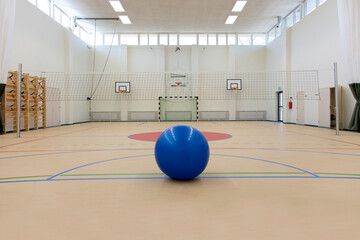Are we Valuing the Wrong Resource?

The last thirty years has seen a revolution in school sports facilities. In every sector, expenditure has mushroomed, with the evidence everywhere. Artificial pitches, sports halls, swimming pools, fitness gyms and running tracks have appeared in schools of all types. No longer are they confined to a small number of high performing institutions – and neither are outstanding facilities any longer the preserve of the independent sector. Everywhere, the buildings for sport are better than ever: the results of unprecedented investment are in plain sight.
What has the impact been? Fewer children are playing team games in schools than at any time in the last 100 years. There has been no corresponding increase of participation in individual activities. Research from Essex University shows conclusively that fitness levels of teenagers have declined steadily and significantly over the last ten or so years. Childhood obesity levels have elevated. Sport England have demonstrated that school sport impacts unequally upon different types of pupils. The arms race of facility development doesn’t seem to have influenced any of this.
At the same time, the standard of performance of the best athletes in many schools has rocketed. Teams and individuals compete at a higher standard than ever before, and the teams winning the competitions featured on these pages are better prepared, and resourced, than ever. Meteoric enhancements of conditioning, analysis, medical provision, plus more specialist coaches than ever before. The cost of running school sport is greater than ever, estimated to have doubled in many environments in the last five years. However, it continues to engage mostly the minority of pupils who were already enthused - and always have been.
Why has all this investment not had greater impact, on more children? It largely misunderstands inspiration. It is not buildings which inspire participation and aspiration – it is people. The best facilities might enable sports involvement, but they are unlikely to inspire it. Only people – most notably teachers and coaches – light the spark that fires the imagination of children. That causes them to love being active, taking part in sports and experiencing the unique thrill of mastery, improvement and achievement. To experience the powerful bonds of teamship and shared striving. Only people can press those buttons.
The biographies of iconic stars all detail how they became involved in sport: the stimulus to take part in the first place, and the support through those vital early phases. It is not the facilities that are credited, but the coaches. These are the people who make sport come to life for young performers, give them opportunities and support their early engagement. There are human stories behind every aspiring performer – rarely facility ones.
The influence of the right people is beyond dispute. The relative reluctance to invest in this resource is therefore mystifying. In environments where multi-million pound facilities abound, delivery can be in the hands of overworked specialist teachers, inexperienced graduate assistants, classroom teachers of varying capability and peripatetic coaches who leave their engine running at the side of the pitch to make a quick getaway. It is a mixed
economy of varying quality. Settling for less spectacular facilities, but combining them with amazing, inspirational people would be always be a better all-round investment. On the few occasions when this happens, the impact is dramatic.
The best people now operate differently. Styles of coaching have changed. The shouty authoritarian no longer commands respect, nor the commitment of teenagers. Those than remain seem increasingly out of place, and tend to be of a certain age. The world is evolving, and the promotion of belonging, teamship and individual value has replaced the fear and fractiousness which characterised the touchline dictator. The best coaches now model a character curriculum, which values individual effort and commitment. These coaches win the battles in the corridors, to establish a culture of willing participation. In the schools who have evolved delivery to achieve this, sport thrives. Elsewhere, it becomes incrementally less relevant to teenagers.
The industrialisation of coach education has not helped. The UK Coaching Certificate, with its currency of ‘Levels’, has promoted an undue focus on technical outcomes: coaching the game, not the person. It has created a form of cone-inspired delivery that is only relevant for a minority of pupils, as well as a lexicon of qualification which values the holders of ‘Awards’ more highly than those teachers who have an instinctive pastoral connection with children. Drills have replaced thrills as the diet of learning sports.
School sport faces a number of 21st century challenges, that did not exist in previous eras. The honour of selection cannot be assumed, commitment to weekend matches has become more flaky, team games do not have the appeal that they once had and the range of rival, technology-inspired, alternative pursuits is unprecedented. Teenage fitness levels are at an all-time low. And yet the answer is sought in the wrong place. The solution is in the people, not the programmes, nor the places. This is the priceless resource, the thing that makes the genuine difference. Neither is it a new discovery: it has always been the case. Building a workforce that can win the hearts and minds of teenagers is the greatest challenge for school sport. No shiny new facility can do that.
This article first appeared in ‘School Sport’ Magazine. Summer edition 2023